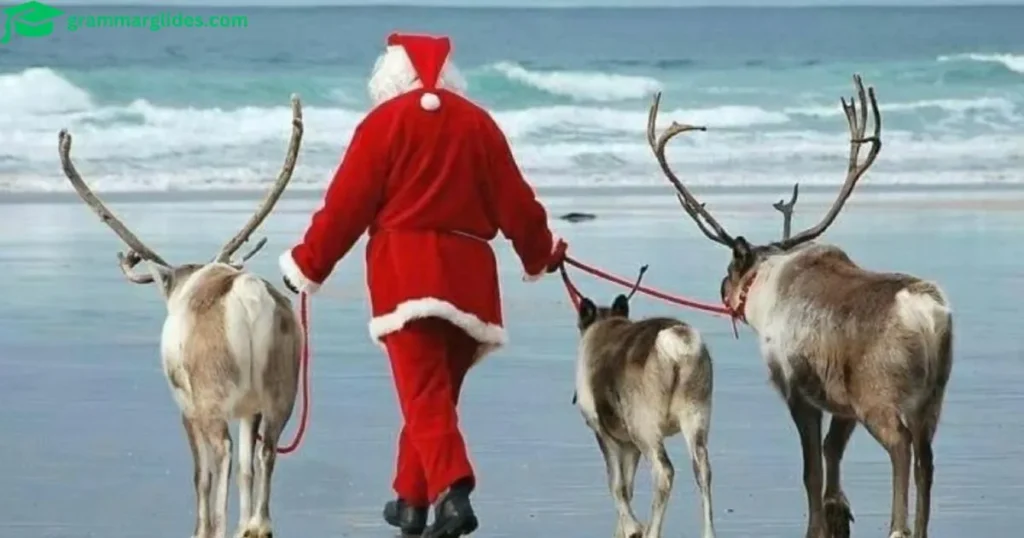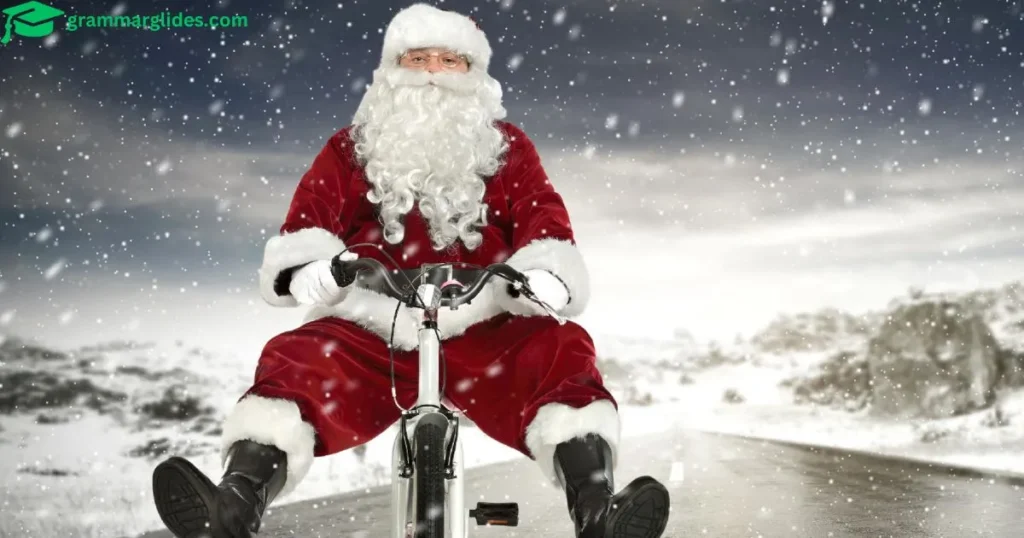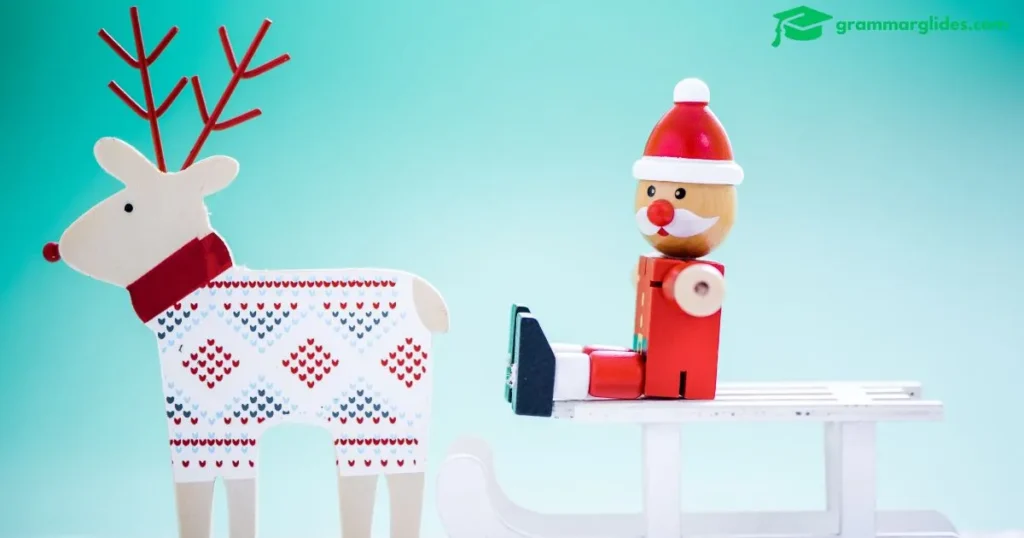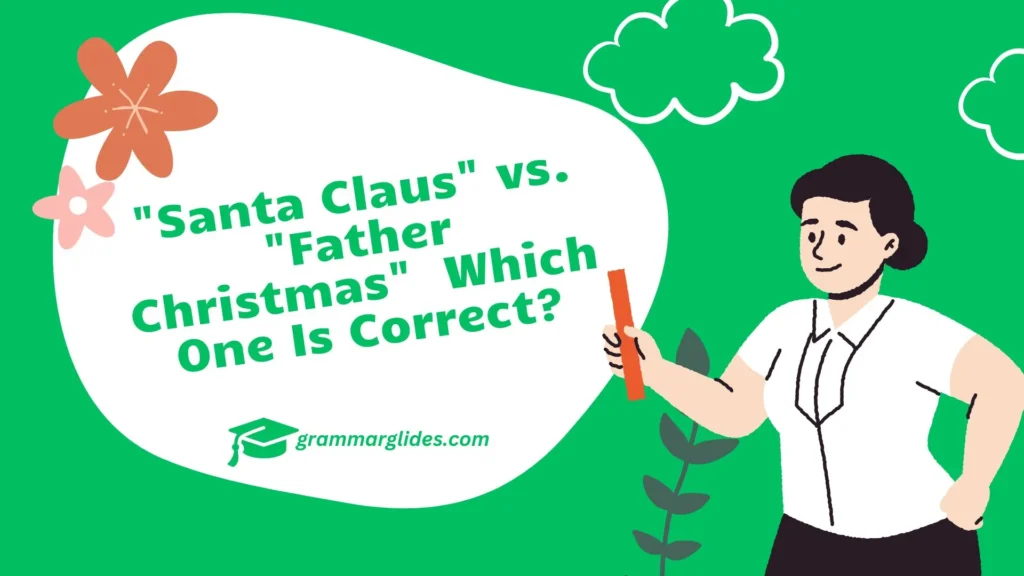“Unravel the mystery of these festive names and their historical origins!”
The holiday season brings joy, laughter, and delightful traditions. Among these traditions, two familiar names – “Santa Claus” and “Father Christmas” – stand out. Both evoke the spirit of giving and warmth, yet they come from different origins and carry distinct cultural significance.
Are you curious to know whether “Santa Claus” or “Father Christmas” is the correct term? Let’s explore their differences, similarities, and how each has evolved over time. You’ll gain fascinating insights into the stories behind these cherished icons.
Understanding the differences between “Santa Claus” and “Father Christmas” can help us appreciate the rich history of Christmas traditions. This article will uncover the truth behind these names, their origins, and their relevance in modern celebrations.
Overview
“Santa Claus” and “Father Christmas” both symbolize Christmas festivities but come from different cultural backgrounds.
While Santa Claus is linked to the Dutch legend of Saint Nicholas and American popular culture, Father Christmas traces back to British folklore. Though they share many attributes today, their histories reveal unique characteristics and transformations.
Dark history of Santa Claus
Santa Claus is a beloved figure who brings joy to children around the world. However, there is a darker side to the story of Santa Claus. Some people believe that Santa Claus is a symbol of consumerism and materialism. Others believe that the story of Santa Claus is a way to control children and make them behave.
There are also some dark legends surrounding Santa Claus. One legend says that Santa Claus is actually a demon who punishes bad children. Another legend says that Santa Claus is a cannibal who eats children.
Despite these dark elements, most people still believe in the magic of Santa Claus. They believe that Santa Claus is a kind and generous man who brings joy to children.
Father Christmas history
Father Christmas has a long history rooted in European folklore and tradition. Originating in England, he was depicted as a joyful, bearded man in a long robe, bringing cheer and goodwill during Christmas celebrations. Over time, his image merged with that of Saint Nicholas and other festive figures, evolving into the beloved gift-giver known today.
By the 19th century, Father Christmas became closely linked to Santa Claus, especially in the U.S. and beyond. While Santa is more focused on delivering presents, Father Christmas traditionally symbolized the festive spirit and merriment of the holiday season. Today, both figures are widely recognized as icons of Christmas joy.
Santa Claus A Look into His Origin

Scenario: Imagine a child eagerly waiting on Christmas Eve, hanging stockings and hoping for presents. The mythical figure they picture is most likely Santa Claus, a jolly man in red with a sleigh and reindeer.
- Origin: Santa Claus originates from Saint Nicholas, a 4th-century bishop known for his generosity. The Dutch brought the tradition of Sinterklaas to America, which evolved into the modern Santa Claus through poetry and advertising in the 19th century.
- Characteristics: He is often depicted with a big belly, white beard, and a magical sack of toys.
- Modern Influence: The iconic image of Santa Claus was popularized by Coca-Cola advertisements in the 1930s.
Examples:
- Parents dressing as Santa Claus to surprise their children.
- Stores featuring Santa Claus for photo opportunities during Christmas.
- Stories of Santa Claus delivering gifts on Christmas Eve.
“Father Christmas”: A Traditional Symbol
Scenario: Picture a quaint British village in the 16th century. Here, Father Christmas embodies the essence of merriment and hospitality during the holiday season.
- Origin: Father Christmas dates back to pre-Christian traditions, where he represented midwinter feasting. He evolved into a festive figure during Victorian England.

- Characteristics: He is depicted as a kind, older man in a green robe, symbolizing the renewal of life during winter.
- Modern Influence: Today, Father Christmas shares similarities with Santa Claus, yet retains his British charm.
Examples:
- Traditional plays featuring Father Christmas as a central character.
- British Christmas cards showcasing Father Christmas in greenery.

3. References to Father Christmas in classic British literature.
Key Differences Between Santa Claus and Father Christmas
Scenario: A classroom debate arises about whether Santa Claus and Father Christmas are the same. The answer lies in their distinct roots.
- Cultural Roots: Santa Claus is rooted in American and Dutch traditions, while Father Christmas is distinctly British.

- Attire: Santa Claus is dressed in red, while Father Christmas often wears green or gold.
- Representation: Santa Claus is more commercialized, whereas Father Christmas retains a traditional, folkloric vibe.
Examples:
- A Christmas market selling red Santa Claus figurines alongside green Father Christmas ornaments.

- A movie featuring Santa Claus with elves versus a storybook of Father Christmas in a quiet forest.
- Schools celebrating Santa Claus in the U.S. but referencing Father Christmas in the U.K.
Why Both Names Are Used Today
Scenario: At a global family gathering, relatives from different countries discuss their Christmas traditions. Some mention Santa Claus, while others speak of Father Christmas.
- Globalization: The world has embraced Santa Claus, yet many cultures retain their traditional Father Christmas stories.

- Media Influence: Movies and books often merge the two figures, creating a shared festive icon.
- Personal Preference: Families may choose the name that resonates most with their heritage.
Examples:
- Children writing letters to Santa Claus in the U.S. and Father Christmas in the U.K.
- A holiday film featuring both Santa Claus and Father Christmas.

3. Multicultural Christmas parties combining both traditions.
Wish You or Wishing You? Choosing the Right Expression
The Role of Pop Culture in Shaping Santa Claus and Father Christmas
Scenario: Imagine children gathered around a TV, watching a Christmas movie. The image they see of Santa Claus or Father Christmas is often shaped by popular culture.
- Hollywood Influence: Movies like The Polar Express and Miracle on 34th Street portray Santa Claus as a magical figure, reinforcing his red-suited persona globally.
- Literature’s Role: British classics like A Christmas Carol often reference Father Christmas as a figure of goodwill.
- Music’s Power: Songs such as Here Comes Santa Claus popularized the name and image of Santa Claus worldwide.

Examples:
- Animated films showing Santa Claus delivering presents in a sleigh.
- Victorian-era books describing Father Christmas as a bringer of cheer.
- Holiday commercials blending elements of both figures.
Modern-Day Celebrations
Scenario: Picture a bustling mall during December. Children queue to meet a man in a red suit, while decorations feature elements of both Santa Claus and Father Christmas.
- Commercial Adaptation: Shopping centers use the image of Santa Claus for promotions and events.
- Cultural Integration: In many countries, elements of both figures merge in modern celebrations.

- Educational Efforts: Schools often teach children about the historical and cultural significance of both names.
Examples:
- A Christmas play featuring Father Christmas teaching kindness.
- Global celebrations incorporating both names in festive greetings.
- Santa Claus parades showcasing his iconic sleigh.
Other Ways to Say “Merry Christmas”
Fun Facts About Santa Claus and Father Christmas
- Name Evolution: Santa Claus comes from “Sinterklaas,” while Father Christmas derives from British midwinter traditions.
- First Appearance: The first image of Santa Claus as a jolly man in red was drawn by political cartoonist Thomas Nast in 1863.
- Father Christmas’s Color: The green robe of Father Christmas symbolizes life and renewal during winter.

- Reindeer Connection: The concept of Santa’s reindeer was popularized by the poem ’Twas the Night Before Christmas.
- Regional Variations: In France, Père Noël resembles Father Christmas, while in Germany, Christkind represents the spirit of Christmas.
Symbolism and Messages
Scenario: Families sit around a Christmas tree, discussing the meanings behind the season.
- Generosity: Both figures emphasize the importance of giving and kindness.
- Unity: The blending of their traditions reflects global connections.
- Joy: They inspire happiness and anticipation, especially for children.

Examples:
- Parents donating gifts to charities in honor of the Christmas spirit.
- Holiday cards featuring messages of love and generosity.
- Communities hosting events that honor both traditions.
| Aspect | Santa Claus | Father Christmas |
| Origin | Derived from the Dutch legend of Sinterklaas, rooted in Saint Nicholas, a 4th-century bishop known for his generosity. | Originates from British folklore and pre-Christian midwinter festivals emphasizing feasting and merriment. |
| Appearance | Wears a red suit trimmed with white fur, black boots, and a matching hat. Often depicted as plump and jolly. | Traditionally shown in a green or gold robe, symbolizing nature and the renewal of life during winter. |
| Cultural Influence | Popularized by American culture, particularly through 19th-century poems, advertisements, and Hollywood movies. | Strongly associated with British culture and Victorian-era traditions. |
| Symbolism | Represents commercialized Christmas, focusing on gift-giving and magical reindeer sleigh rides. | Embodies traditional Christmas spirit, focusing on hospitality and goodwill. |
| Global Reach | Widely recognized globally due to media and marketing campaigns, especially in the U.S. | Primarily known in the U.K. but has influenced other regions with British ties. |
| Key Traits | Cheerful, magical, rides a sleigh with reindeer, and delivers presents to children. | A gentle, wise figure symbolizing festivity, often appearing in more subdued and natural settings. |
How Different Countries Celebrate
Scenario: A traveler explores Christmas customs around the world, discovering the roles of Santa Claus and Father Christmas.
- United States: Santa Claus is the dominant figure, associated with commercial festivities.
- United Kingdom: Father Christmas remains a beloved character in traditional celebrations.
- Australia: The two names are used interchangeably, reflecting cultural diversity.
- Scandinavia: Jultomte, a Santa-like figure, combines local folklore with Santa Claus traits.
Examples:
- Letters addressed to Santa Claus in the North Pole.
- Christmas crackers featuring Father Christmas designs in the U.K.

3. Holiday festivals blending both figures in Australia.
Can “Santa Claus” and “Father Christmas” be used interchangeably?
While they are similar today, their use depends on cultural context. In the U.S., Santa Claus is more common, whereas Father Christmas is preferred in the U.K. However, both represent the joy and generosity of the holiday season.
Key Insight
1. What does “Santa Claus” mean?
Santa Claus originates from the Dutch word “Sinterklaas,” meaning Saint Nicholas, a 4th-century bishop known for gift-giving.
2. Who came first, Santa Claus or Father Christmas?
Father Christmas predates Santa Claus, originating in British midwinter traditions. Santa Claus emerged later, influenced by Dutch and American cultures.
3. Do Santa Claus and Father Christmas look the same?
Not exactly. Santa Claus is typically dressed in red, while Father Christmas is often portrayed in green.
4. Are Santa Claus and Father Christmas real?
They are mythical figures, symbolizing generosity and holiday cheer, rather than real individuals.
5. Why do we use Santa Claus more than Father Christmas today?
Globalization and commercialization have made Santa Claus a more universally recognized figure.
Wrap-Up
The debate between “Santa Claus” and “Father Christmas” is rooted in cultural history and traditions. Both figures bring joy, symbolize generosity, and evoke the magic of Christmas in unique ways. While Santa Claus has a commercial appeal tied to American culture, Father Christmas preserves British folklore’s charm.
Whichever name you use, the true spirit of the season remains universal: kindness, family, and the celebration of giving. Embrace the festive cheer and share the holiday spirit, knowing these icons are timeless reminders of what makes Christmas truly special.

Hi! I’m Lauren Reynolds, the author of Grammar Glides. I create easy-to-follow content that helps you master English with confidence. Let’s make learning English simple and enjoyable together!

